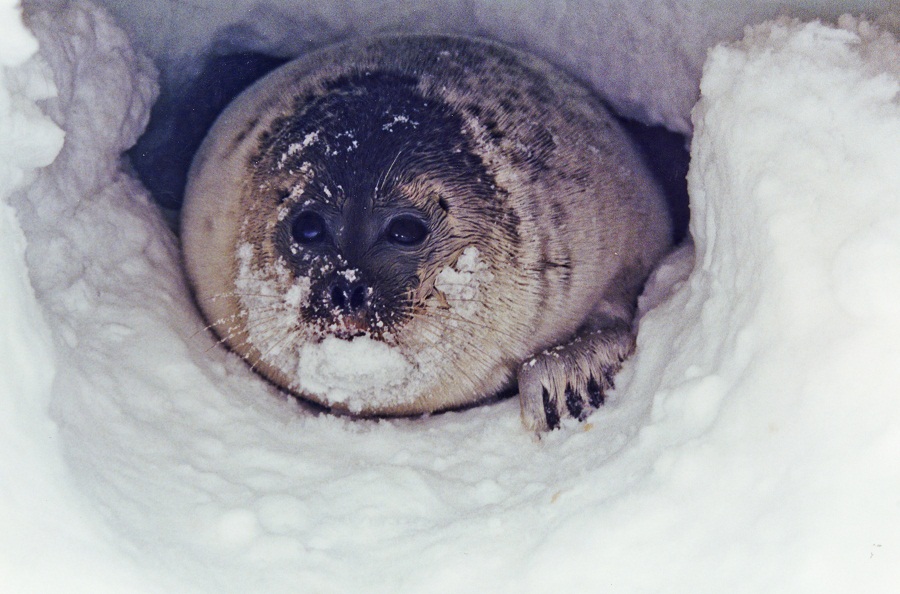Ice Seals Get Endangered Species Protection

Six groups of seals threatened by shrinking sea ice are gaining new protections under the Endangered Species Act (ESA), the National Oceanographic and Atmospheric Administration (NOAA) announced late last week.
NOAA will list as threatened two distinct bearded seal populations — one in the Beringia region, which includes Alaska, and one in the Okhotsk region of Russia's far east — and three subspecies of ringed seals (Arctic, Okhotsk and Baltic). Another ringed seal subspecies found only in Lake Ladoga in northwestern Russia will be listed as endangered. A fifth subspecies of ringed seal, the Saimaa in Finland, is already listed as endangered under the ESA.
Forecasts predict that sea ice will be substantially reduced within this century, and there is potential for the spring and summer ice edge to retreat to deep waters of the Arctic Ocean basin. Bearded seals live on sea ice during critical months for breeding, whelping, nursing and molting. Ringed seals also use sea ice for molting and they build snow caves on top of sea ice to shield their pups from freezing temperatures and predators.
"Our scientists undertook an extensive review of the best scientific and commercial data. They concluded that a significant decrease in sea ice is probable later this century and that these changes will likely cause these seal populations to decline," Jon Kurland, protected resources director for NOAA Fisheries’ Alaska region, said in a statement. [Images of Melt: Earth's Vanishing Ice]
NOAA officials said the decision will not result in any immediate restrictions on human activities, though their next step is to evaluate potential protected habitats for Arctic ringed seals and the Beringia bearded seals (those that live in U.S. waters), which already has oil and gas companies in Alaska miffed. In a statement, Kara Moriarty, executive director for the Alaska Oil and Gas Association, criticized the decision for being "based on how climate change might affect these species 100 years from now, despite their populations currently being healthy and abundant." The group is concerned that potential habitats could raise costs and cause delays with oil and gas development, the Alaska Dispatch reported.
NOAA officials said the new listings were based on the best available science, including climate models developed by the Intergovernmental Panel on Climate Change (IPCC). The agency also pledged that any future habitat designation will fully consider the economic impact and will aim to avoid unnecessary burdens and costs on states, tribes, localities and the private sector.
A study published earlier this year in the journal Geophysical Research Letters warned that while the mid-winter snowfall rate is expected to increase slightly by the end of the century, Arctic sea ice is expected to start forming later in the season. This means that heavy snow falling earlier in the winter will drop into the ocean instead of piling up on the ice, the researchers said.
Get the world’s most fascinating discoveries delivered straight to your inbox.
Drawing on 10 different climate models, the researchers predicted that the area of the Arctic that gets 8-inch (20-centimeter) accumulations of snow will drop by almost 70 percent during the 21st century. This would significantly reduce the area where Arctic ringed seals can build sufficient caves. Earlier snowmelts and increased rainfall will also threaten to dissolve the seals' caves before the pups are ready to venture outside on their own, the researchers said.
Follow LiveScience on Twitter @livescience. We're also on Facebook & Google+.

